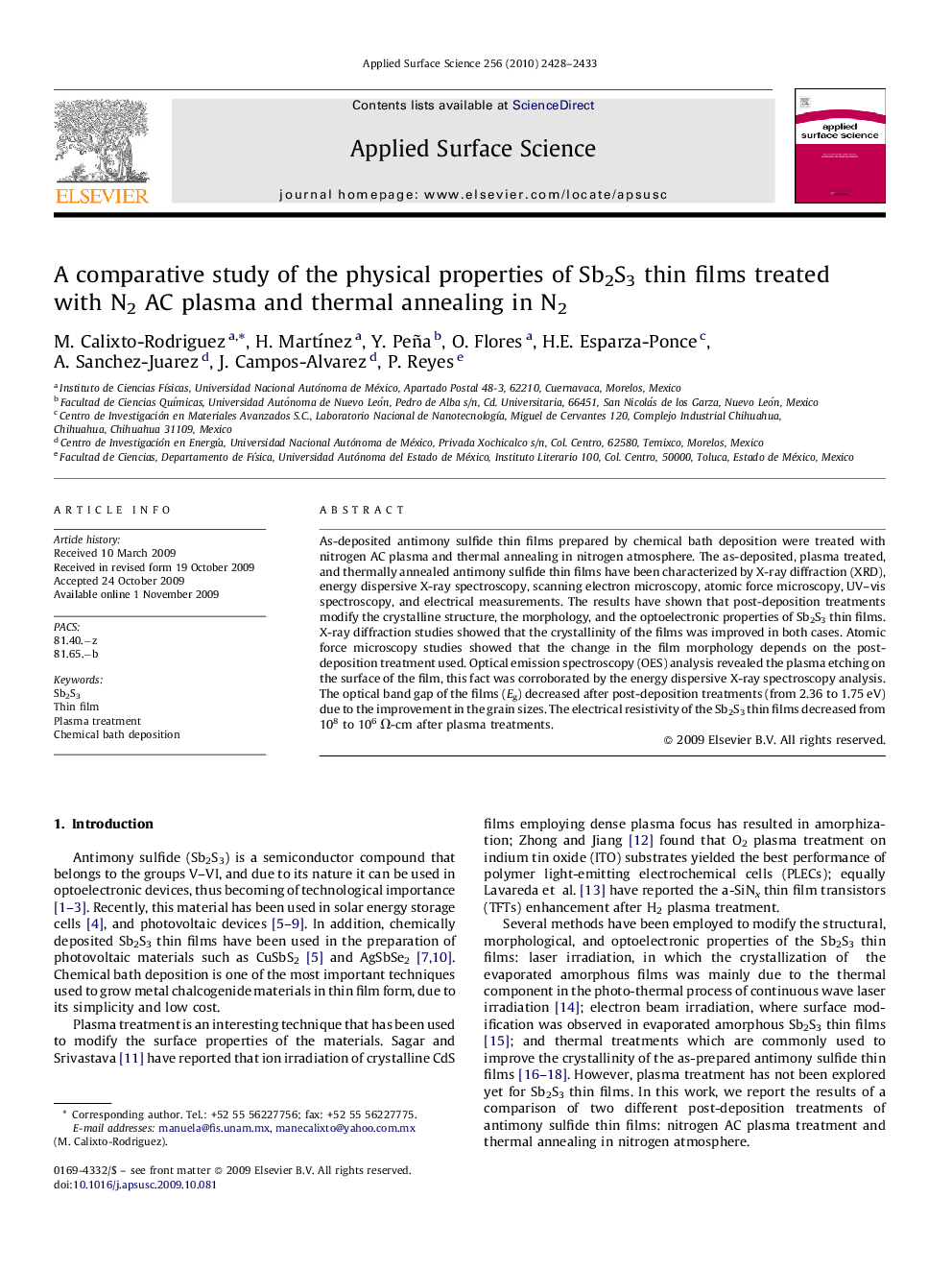| Article ID | Journal | Published Year | Pages | File Type |
|---|---|---|---|---|
| 5363278 | Applied Surface Science | 2010 | 6 Pages |
Abstract
As-deposited antimony sulfide thin films prepared by chemical bath deposition were treated with nitrogen AC plasma and thermal annealing in nitrogen atmosphere. The as-deposited, plasma treated, and thermally annealed antimony sulfide thin films have been characterized by X-ray diffraction (XRD), energy dispersive X-ray spectroscopy, scanning electron microscopy, atomic force microscopy, UV-vis spectroscopy, and electrical measurements. The results have shown that post-deposition treatments modify the crystalline structure, the morphology, and the optoelectronic properties of Sb2S3 thin films. X-ray diffraction studies showed that the crystallinity of the films was improved in both cases. Atomic force microscopy studies showed that the change in the film morphology depends on the post-deposition treatment used. Optical emission spectroscopy (OES) analysis revealed the plasma etching on the surface of the film, this fact was corroborated by the energy dispersive X-ray spectroscopy analysis. The optical band gap of the films (Eg) decreased after post-deposition treatments (from 2.36 to 1.75 eV) due to the improvement in the grain sizes. The electrical resistivity of the Sb2S3 thin films decreased from 108 to 106 Ω-cm after plasma treatments.
Related Topics
Physical Sciences and Engineering
Chemistry
Physical and Theoretical Chemistry
Authors
M. Calixto-Rodriguez, H. MartÃnez, Y. Peña, O. Flores, H.E. Esparza-Ponce, A. Sanchez-Juarez, J. Campos-Alvarez, P. Reyes,
